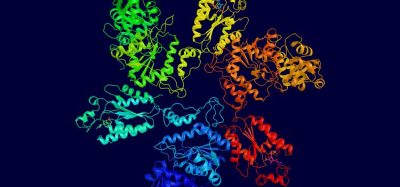ICH Q6(R1): test criteria and specifications
Posted: 23 December 2024 | Dave Elder (David P Elder Consultancy) | No comments yet
Dave Elder shares industry thoughts on an ICH Q6(R1) concept paper that aims to revise general principles for uniformity and consistency across ICH Q6 guidelines for test criteria and specifications.


ICH Q6A1 and ICH Q6B2 are now 25-years old and urgently in need of revision.3 Many significant changes have occurred during this time, particularly in development and approval of biological products. At the turn of the century only four to five antibodies were approved, and all based on limited knowledge and understanding. Since then, there have been major advances in this field, including “monoclonal antibodies (MAbs), other recombinant proteins, antibody drug conjugates (ADCs) and advanced therapy medicinal products (ATMPs), and considerably better understanding of product characteristics”.3 This is in addition to the development and approval of significant numbers of biosimilar products.4
The past quarter century has also seen the advent of quality by design (QbD) and quality risk-based management (QrM) (eg, ICH Q8,5 Q9,6 Q10,7 Q118), lifecycle management (ICH Q129), continuous manufacturing (ICH Q1310) and the novel concepts of real-time release, alongside guidance for novel and orthogonal analytical method development and validation (ICH Q1411). Quality guidelines for novel impurities have also been implemented, eg, ICH Q3D,12 ICH Q3E,13 ICH M7.14 This in turn has led to the introduction of safety-based limits,15 eg, permitted daily exposures (PDEs), etc.
ICH Q6A1 states that “specifications should focus on those characteristics found to be useful in ensuring the safety and efficacy of the drug substance and drug product”. However, applicants’ experience is that global agencies focus on “batch experience, even when limited, and this plays an overwhelming role in developing impurity acceptance criteria rather than clinical relevance”.16 This has led to a need to develop and introduce patient-centric specifications.16,17
A patient-centric quality standard (PCQS) is defined as “a set of patient-relevant attributes and their associated acceptance ranges to which a drug product should conform within the expected patient exposure range”.17
The ICH Q6(R1) guideline aims to revise, and in parallel modernise, both existing ICH Q6 guidances by encouraging uniformity and consistency between these guidelines”
The ICH Q6(R1) guideline aims to revise, and in parallel modernise, both existing ICH Q6 guidances by encouraging uniformity and consistency between these guidelines and “establish general principles in setting specifications for all product modalities; aligning with other relevant ICH guidelines and current approaches; and revising the scope of the guideline to incorporate contemporary modalities”.
However, challenges abound. The quality criteria for biologics tend, of necessity, to be different than for small molecules; the former focuses on consistent profile of heterogeneity, while the latter is aimed at consistent homogeneity. The methodology for biologics tends to be broader in nature, looking at similarities in molecular size (size exclusion chromatography (SEC)), charge (electrophoresis) and impurity profiles (cation exchange chromatography/ultra-violet/mass spectroscopy (CEX/UV/MS)), as well as employing the more classical ultra performance liquid chromatography/ultraviolet/mass spectroscopy (UPLC/UV/MS).
The European Federation of Pharmaceutical Industries and Associations (EFPIA)19 recently issued a position paper on the proposed ICH Q6(R1)18 initiative.
It highlighted that:
- specification attributes can extend beyond those critical quality attributes (CQA) that are essential for safety and efficacy
- batch-based specifications do not always replicate clinically relevant safety or efficacy attributes or indeed the “true process capability” operating at the edge of failure for input materials
- the ICH Q6 (R1) concept paper makes no mention of QbD or QRM principles. Adoption of PCQS16,17 approaches would restore the primacy of setting specifications based on product safety and efficacy considerations rather than solely on process capability arguments. PCQS16,17 approaches support accelerated development and manufacturing flexibility, as the impact of process changes on quality would be assessed in an objective fashion and would not necessarily require changes to the product specification.19
About the author


References
1. ICH Q6A. Test Criteria And Acceptance Criteria For New Drug Substances And Drug Products Chemical Substances. May 2000, CPMP/ICH/367/96.
2. Test Criteria And Acceptance Criteria For Biotechnological/Biological Products. September 1999, CPMP/ICH/365/96.
3. Eglovitch JS. EU Official Says ICH Q6B Is Outdated And Needs Revision. [Internet] Regulatory Focus. 2021. [cited 2024August]. Available from: https://www.raps.org/news-and-articles/news-articles/2021/12/eu-official-says-ich-q6b-is-outdated-and-needs-rev.
4. The Biosimilar Landscape: An Overview of Regulatory Approvals by the EMA and FDA. Pharmaceutics. 2021; 13(1): 48.
5. ICH Q8(R2) Pharmaceutical Development – Scientific Guideline. 22 June 2017.
EMA/CHMP/ICH/167068/2004.
6. ICH Q9(R1) Quality Risk Management – Scientific Guideline. 3 February 2023.
EMA/CHMP/ICH/24235/2006.
7. ICH Q10 Pharmaceutical Quality System – Scientific Guideline. September 2015.
EMA/CHMP/ICH/214732/2007.
8. ICH Q11 Development And Manufacture Of Drug Substances (Chemical Entities And Biotechnological/Biological Entities) – Scientific Guideline. November 2012. EMA/CHMP/ICH/425213/2011.
9. ICH Guideline Q12 On Technical And Regulatory Considerations For Pharmaceutical Product Lifecycle Management. 4 March 2020. EMA/CHMP/ICH/804273/2017.
10. ICH Guideline Q13 On Continuous Manufacturing Of Drug Substances And Drug Products – Scientific Guideline. 3 March 2023. EMA/CHMP/ICH/427817/2021.
11. ICH Q14 Analytical procedure development – Scientific guideline. 14 December 2023. EMA/CHMP/ICH/195040/2022.
12. ICH Q3D(R2) Elemental Impurities – Scientific Guideline. 2 May 2022. EMA/CHMP/ICH/353369/2013.
13. ICH Q3E Guideline for Extractables and Leachables (E&L). Final Concept Paper. 30 June 2020.
14. ICH M7(R2) Assessment and Control Of DNA Reactive (Mutagenic) Impurities In Pharmaceuticals To Limit Potential Carcinogenic Risk – Scientific Guideline. 18 July 2023. EMA/CHMP/ICH/83812/2013.
15. Elder DP. Safety Based Limits for the Control of Impurities in Drug Substances and Drug Products: A Review. Glob J Pharm Pharmac Sci. 2017; 1(4);1-5.
16. Bercu J, Berlam SP, Berridge J, et al. Establishing Patient Centric Specifications for Drug Substance and Drug Product Impurities. J Pharm Innov. 2019; 14: 76-89.
17. Mire-Sluisa A, Dobbins J, Moore CMV, et al. Patient-Centric Quality Standards. J Pharm Sci. 2024; 113: 837-855.
18. ICH Q6(R1) EWG: Maintenance of the ICH Q6A and Q6B Guidelines. Final concept Paper. 25 June 2024.
19. EFPIA Position Paper on ICH Q6A/B Revision. [Internet] Vaccines Europe. 2023. [cited 2024September]. Available from: https://www.vaccineseurope.eu/wp-content/uploads/2023/06/efpia-ve-position-paper-on-ich-q6-specifications_5june2023.pdf.
Issue
Related topics
Biopharmaceuticals, Drug Development, Drug Manufacturing, Drug Safety, Impurities, Manufacturing, Regulation & Legislation, Research & Development (R&D), Therapeutics
Related organisations
European Federation of Pharmaceutical Industries and Associations (EFPIA), International Council for Harmonisation (ICH)









